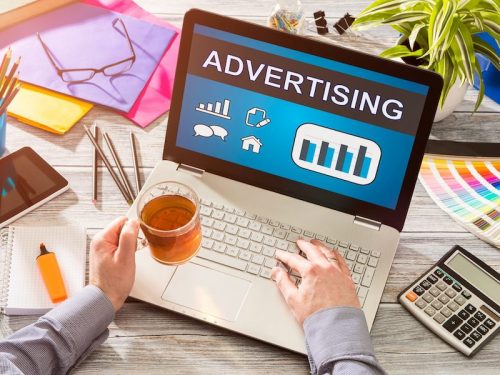
Alex Hertel & Philipp Hertel, Co-Founders of Xperiel explain how with today’s mobile audience, marketers need to realize that the future of advertising, especially on mobile, needs new and original approaches in order to be relevant
Back in 2007 and 2008 when the iOS and Android smartphone platforms were still in their infancy, it became clear that something really big was about to happen. Soon everyone would be carrying supercomputers in their pockets at all times, and that was going to change the world in profound ways.
And it did: we now have every major communication channel (talk, text, videoconference, Twitter, Snapchat, etc.) available to us 24/7. Our map apps have eliminated the need for their paper counterparts, and we can’t get lost anymore. We have a large fraction of all human knowledge at our fingertips whenever we want it. We can even tap-and-pay using our phones. All of this is nothing short of amazing and for most of us life without these portable digital miracles seems unimaginable.
However, there’s one underwhelming area where smartphone revolution has made remarkably little progress: advertising.
“Mobile advertising really sucks.”-Steve Jobs, April 2010
While this might not have been the most diplomatic way to put it, Steve Jobs had a point, and this point is still valid more than six years later. Finding someone even today who likes mobile advertising is like finding someone who likes mosquitoes. The state of the art hasn’t progressed in any meaningful way since Jobs made this declaration, and so-called “mobile advertising” really isn’t mobile at all. There isn’t anything mobile going on in the banner ad at the top of your Angry Birds game. Banner ads are an old Web 1.0 technology that takes us back to the worst of digital advertising circa 1998. Someone tricked us into calling this mobile advertising, and for whatever reason, nobody ever noticed.
The problem is that mobile advertisers have completely failed to take advantage of our smartphones’ sensors. Nobody has been able to figure out how to leverage the physicality and portability of a smartphone to create a new ad format that moves us beyond the Web 1.0 era. Our mobile hardware has continued to make progress, but kind of like watching an old grainy, flickering VHS movie on a new high-res flat screen television, our adtech comes from a previous generation. Nevertheless, we shouldn’t be too harsh because this is a hard problem. Banner ads and their ilk seem to be the best we can do given our current technology, and if it were easy to do better, then someone probably would have already done so.
That’s all about to change. We’re currently seeing a great deal of innovation aimed at merging the physical and digital worlds. The Internet is being pushed out into the real world, taking our physical spaces and making them digitally interactive. Instead of the World Wide Web, we call this the “Real World Web” (or RWW for short), and it’s already changing our lives. So far, only a few forward-thinking companies have been able to fully benefit from building apps that are truly mobile. For instance, the real-world Pokemon Go game became one of the fastest-growing apps in history. Uber is another great example of a real-world app, and it has become one of the fastest-growing companies in history. The Starbucks app is used by customers to physically interact with their cafes, and it’s one of the most successful consumer-facing brand apps -indeed, it holds more money than some banks. Google Maps might be the most useful app ever made, helping users not only navigate, but also providing live updates on traffic and road conditions. All of these examples live at the intersection of the physical and the digital, and we’re going to see a good deal more innovation in this space in the next few years.
One area ripe for disruption by the Real World Web is – you guessed it – mobile advertising. The RWW is on the cusp of completely changing the nature of mobile adtech, and we’re about to finally see a truly mobile ad format break away from the WWW. What is this going to look like? We’ve seen some hints of it. For instance, consider the Pokemon Go game. The developers discovered that if you put a PokeStop on the sidewalk in front of a pizzeria, it drives foot traffic to the restaurant, and all of a sudden business is booming.
You can put up a billboard or pay for a banner ad telling people to go to the pizzeria, and virtually nobody will even notice the ads, let alone obey them and walk from point A to point B. We’ve all been inoculated against this type of spam and it becomes less effective every day. But if you create a really cool game that drives passionate engagement, then as a pure side effect of playing it, you can incentivize valuable customer behavior without making the recipient feel like they’re being targeted by advertising in the first place. Instead, they’re having fun and there’s a quid pro quo -they’re actually getting something they believe is valuable in exchange for their actions.
The whole industry will soon move away from spammy banners and pop-ups toward much higher quality experiential advertising that’s far better and more engaging than traditional ads. For another good example of cool experiential marketing, check out a campaign that the Mini car company ran in Stockholm in October 2010 called the “Mini Getaway.”
Pokemon Go and the Mini Getaway campaign both use a smartphone’s GPS sensors to gather inputs from the real world, but there are many others such as the phone’s camera, microphone, NFC, and bluetooth. In this vision of the future, there will be no such thing as non-digital advertising. We’ll use these sensors to upgrade ALL traditional advertising channels to become digital, interactive, and measurable. We’ll be able to put digital triggers onto all of our T.V., print, and billboard channels to unify them into a single system so that there are no longer any siloes. This will be the ultimate expression of cross-channel marketing, and the common denominator across them all will be our mobile devices. As a result, advertising will quickly become more valuable to consumers because when you engage with these types of ads, you’ll get something in return. It might be a discount that’s saved to your phone, or a free service, a digital download such as a song, or an extra power-up in a digital game. All of this will be targeted, so two people interacting with the same T.V. ad during the Super Bowl may receive completely different rewards.
Targeted experiential marketing is the new twist here. Traditionally, experiential marketing has been a one-size-fits-all proposition. It’s been so expensive to launch these engaging campaigns that advertisers can at best afford to run one at a time. These costs are poised to decrease dramatically, so now brands will be able to run, say, six at a time, all targeted at different demographics in the real world. Experiential marketing has always been the best, most creative and engaging ad format, but it’s also been the most expensive and the hardest to scale. Both of these problems will soon be solved and we’re going to see these creative and engaging campaigns run at scale for a fraction of today’s costs.
Finally, because all marketing channels will be digital, they’ll become measurable and we will at last be able to close the offline attribution loop between online advertising and physical activity. We’ll be able to track a customer’s journey through a brand’s marketing empire from T.V. to print to the sponsored music festival, and then to the cash register in order to calculate attribution just like we do online today.
This is what big brand advertising is going to look like in a fully interactive world where the physical and digital have merged. Our smartphones should have revolutionized advertising many years ago, but the day is fast approaching when they will finally fulfill their great promise.
___
by Philipp Hertel
source: MTA


